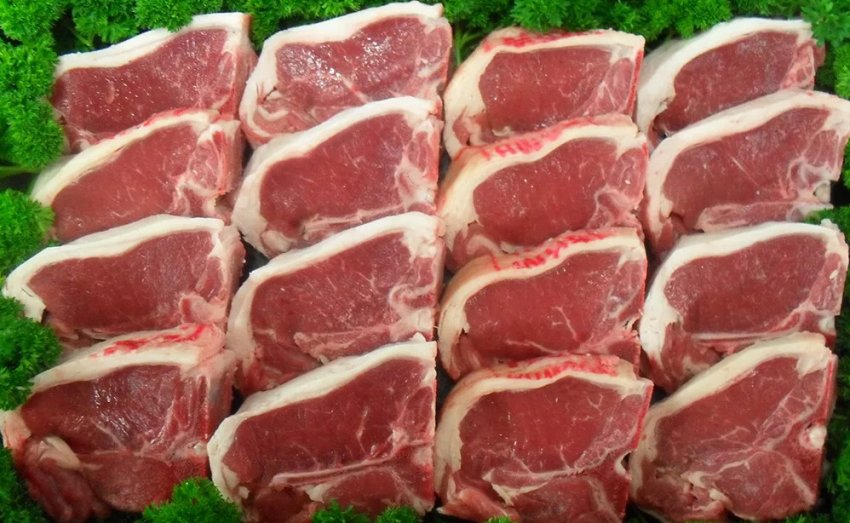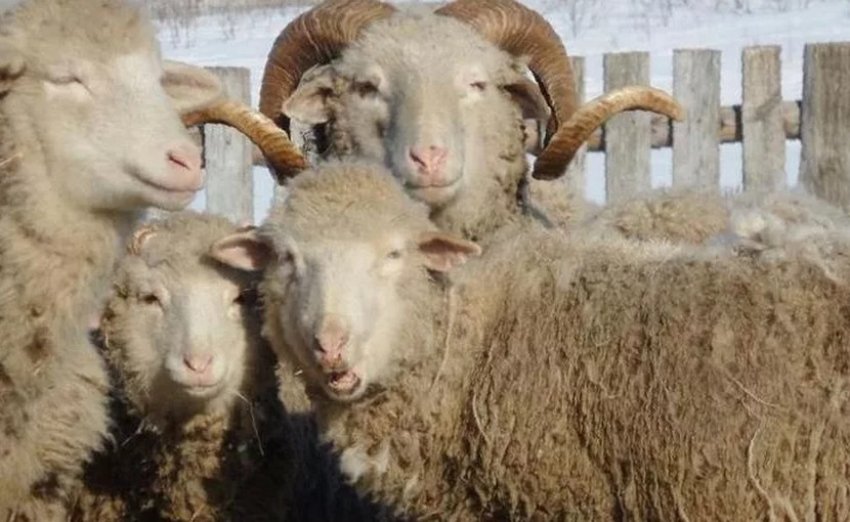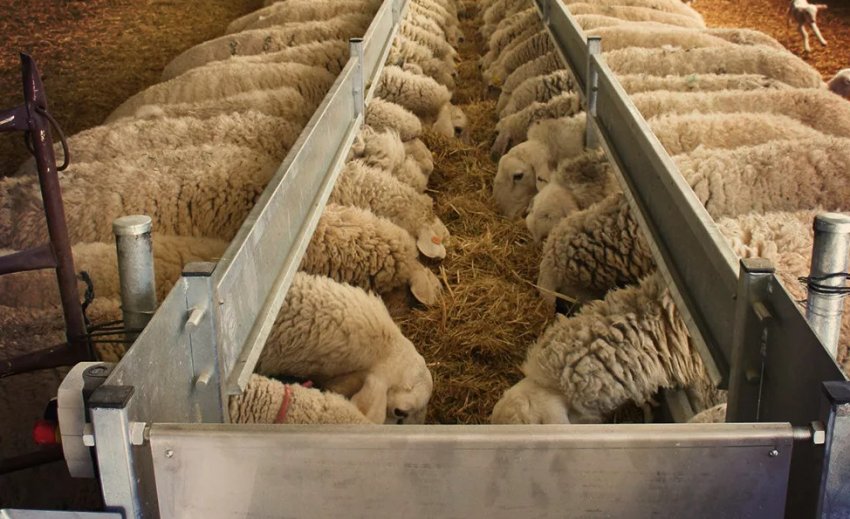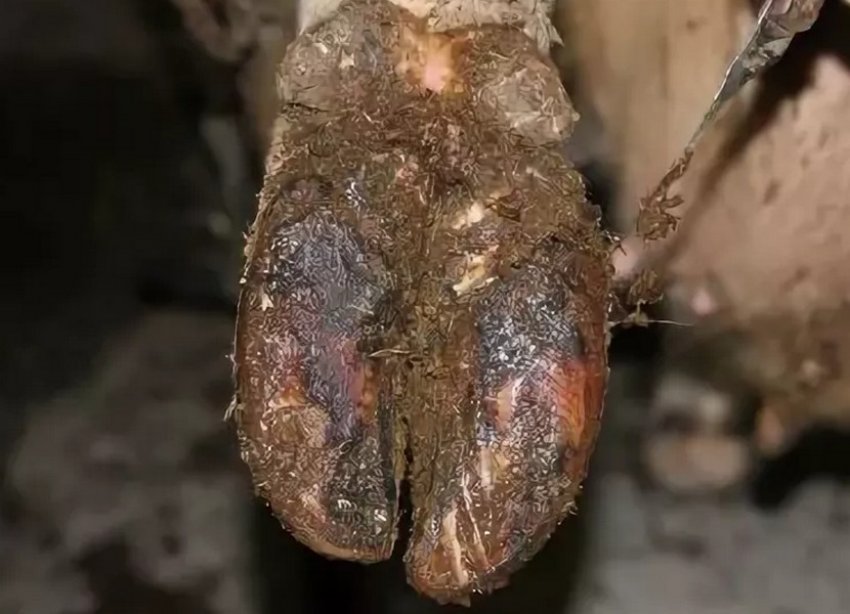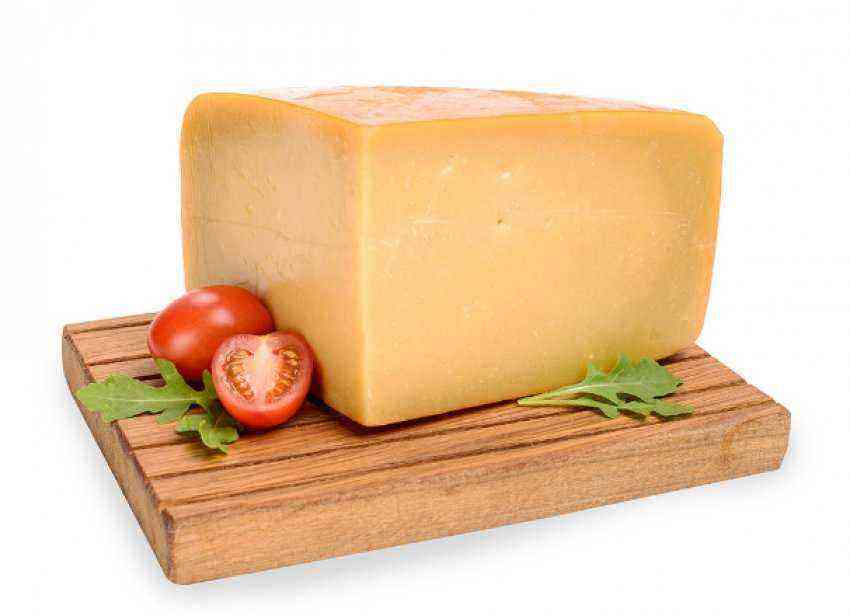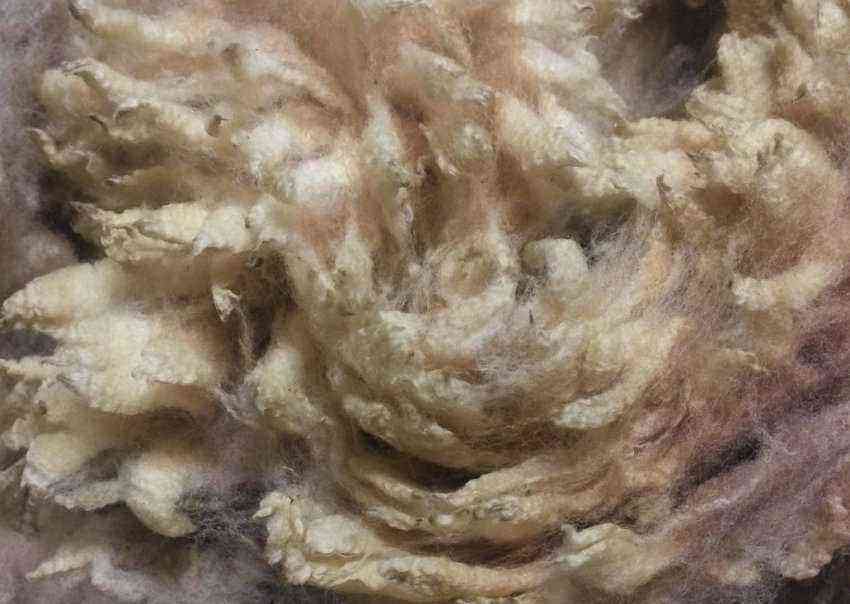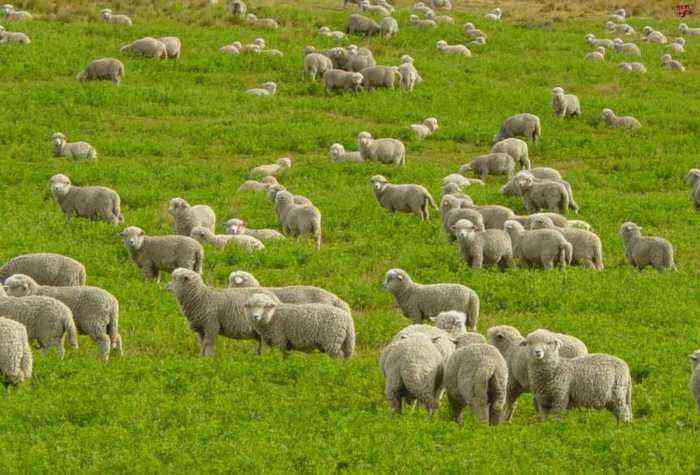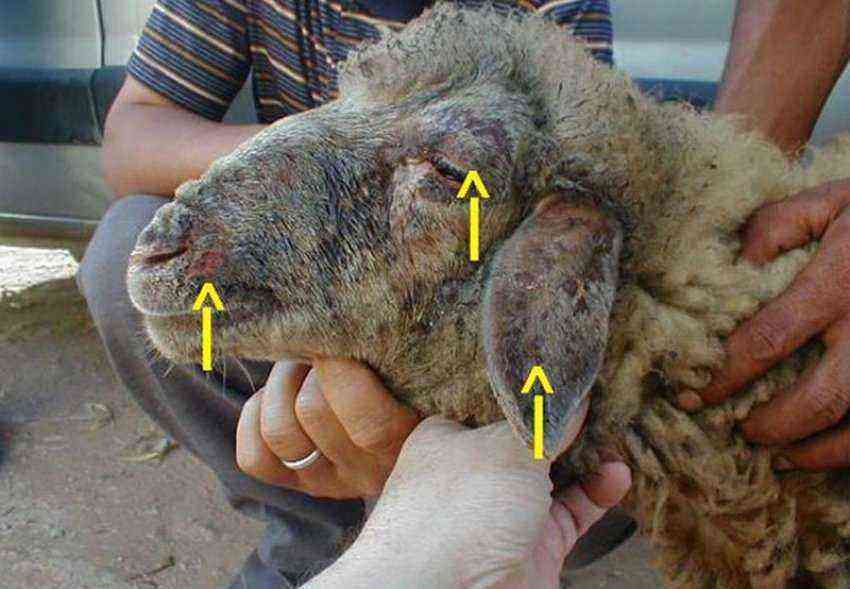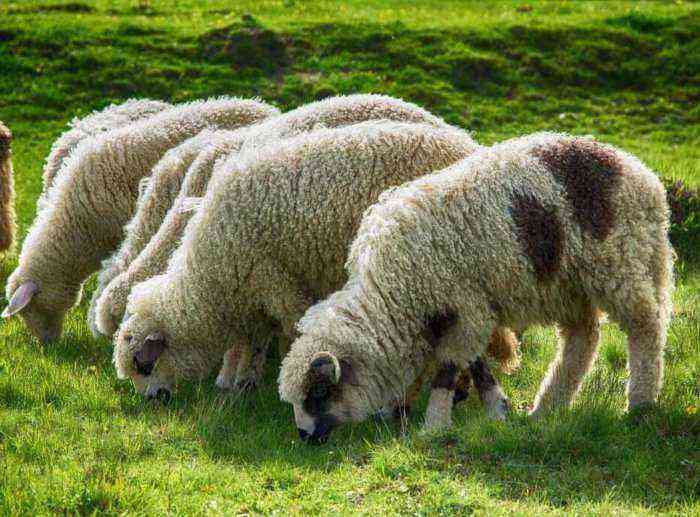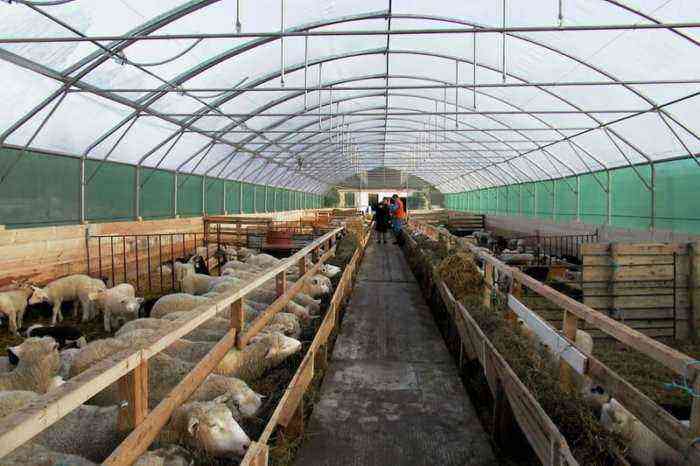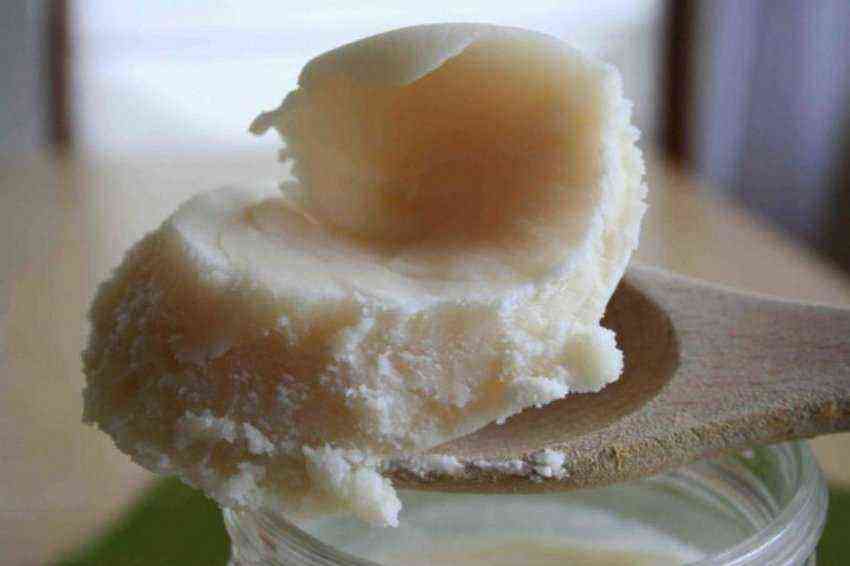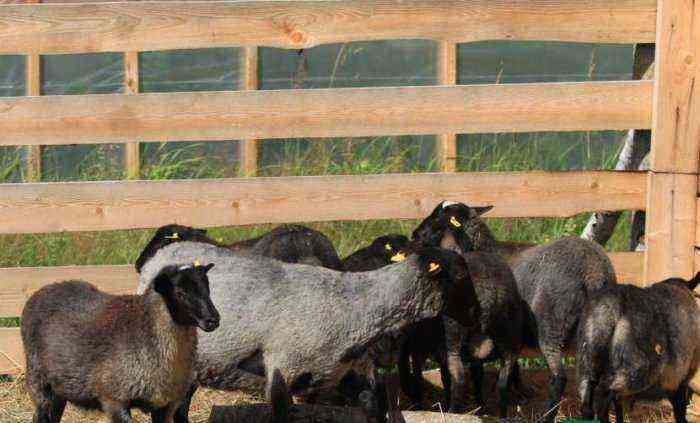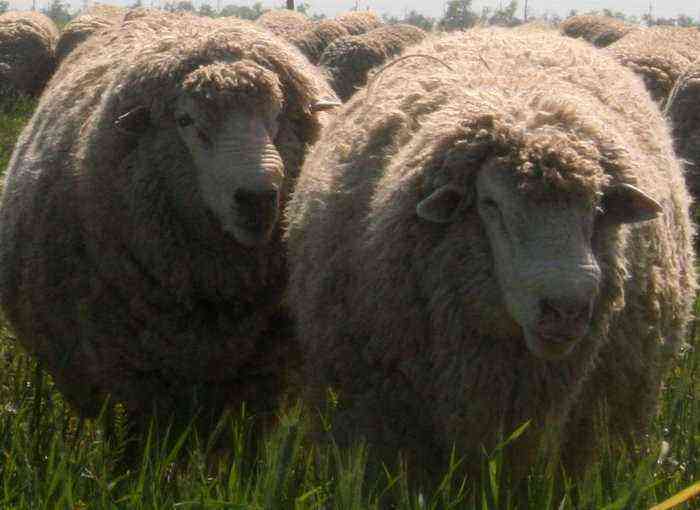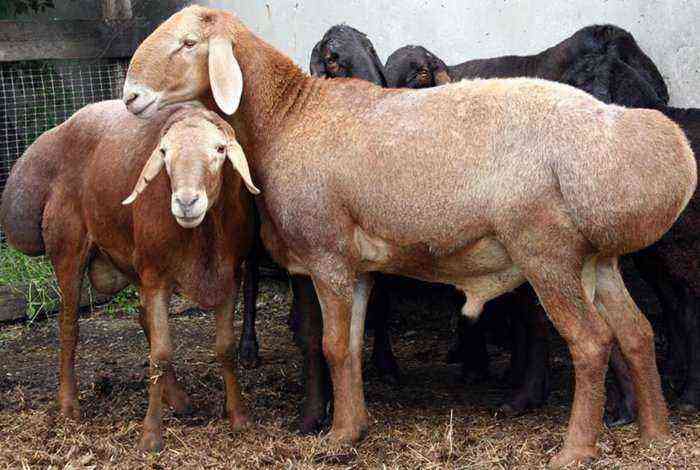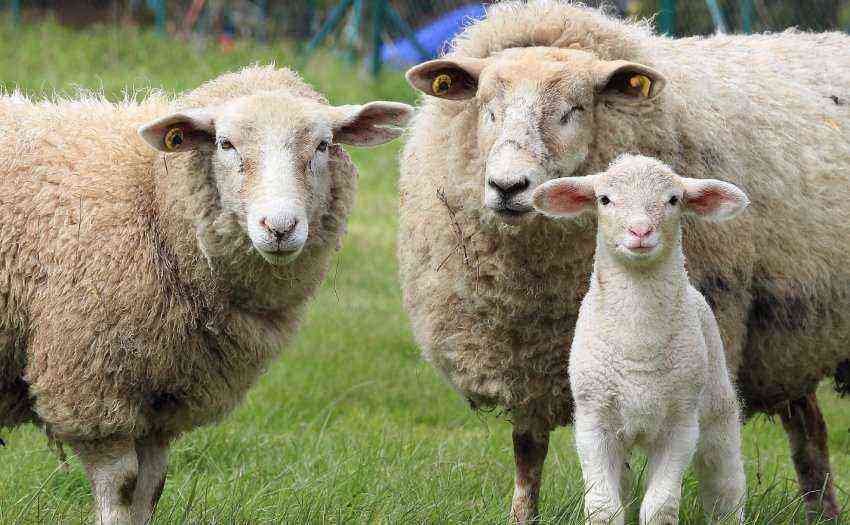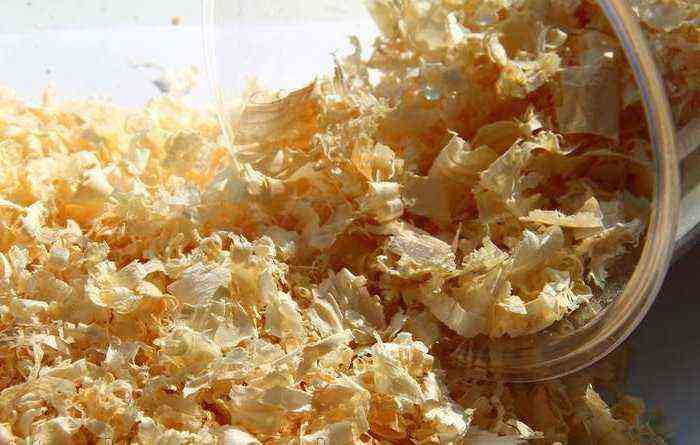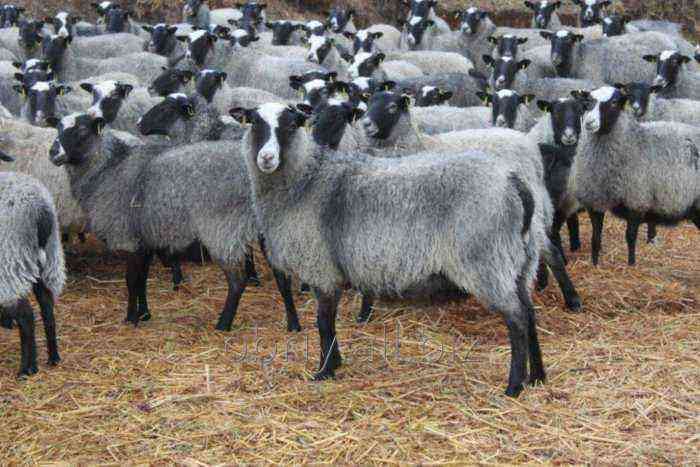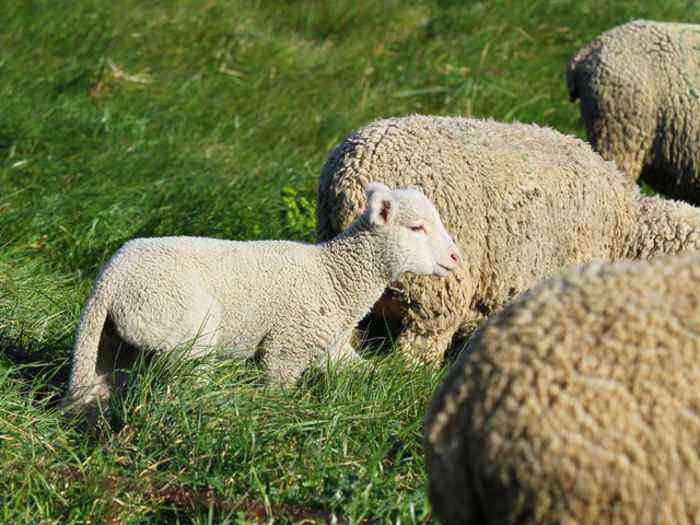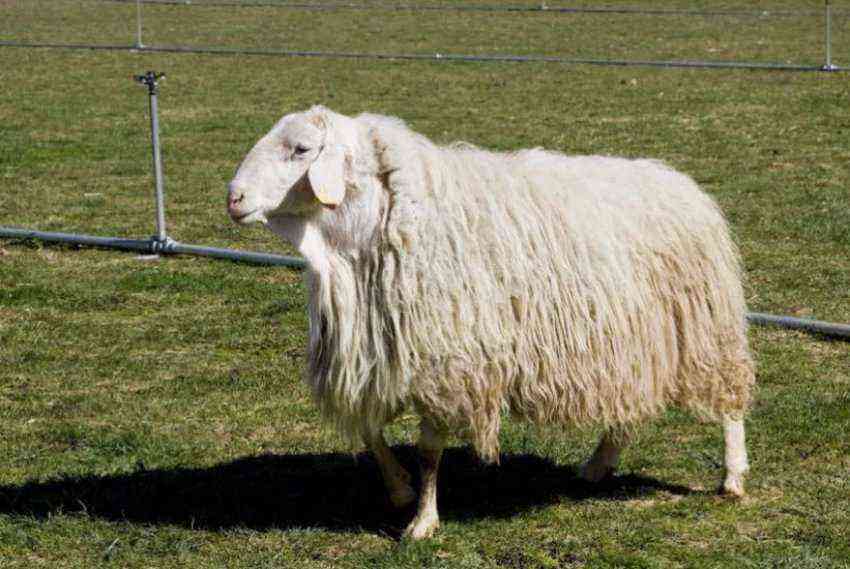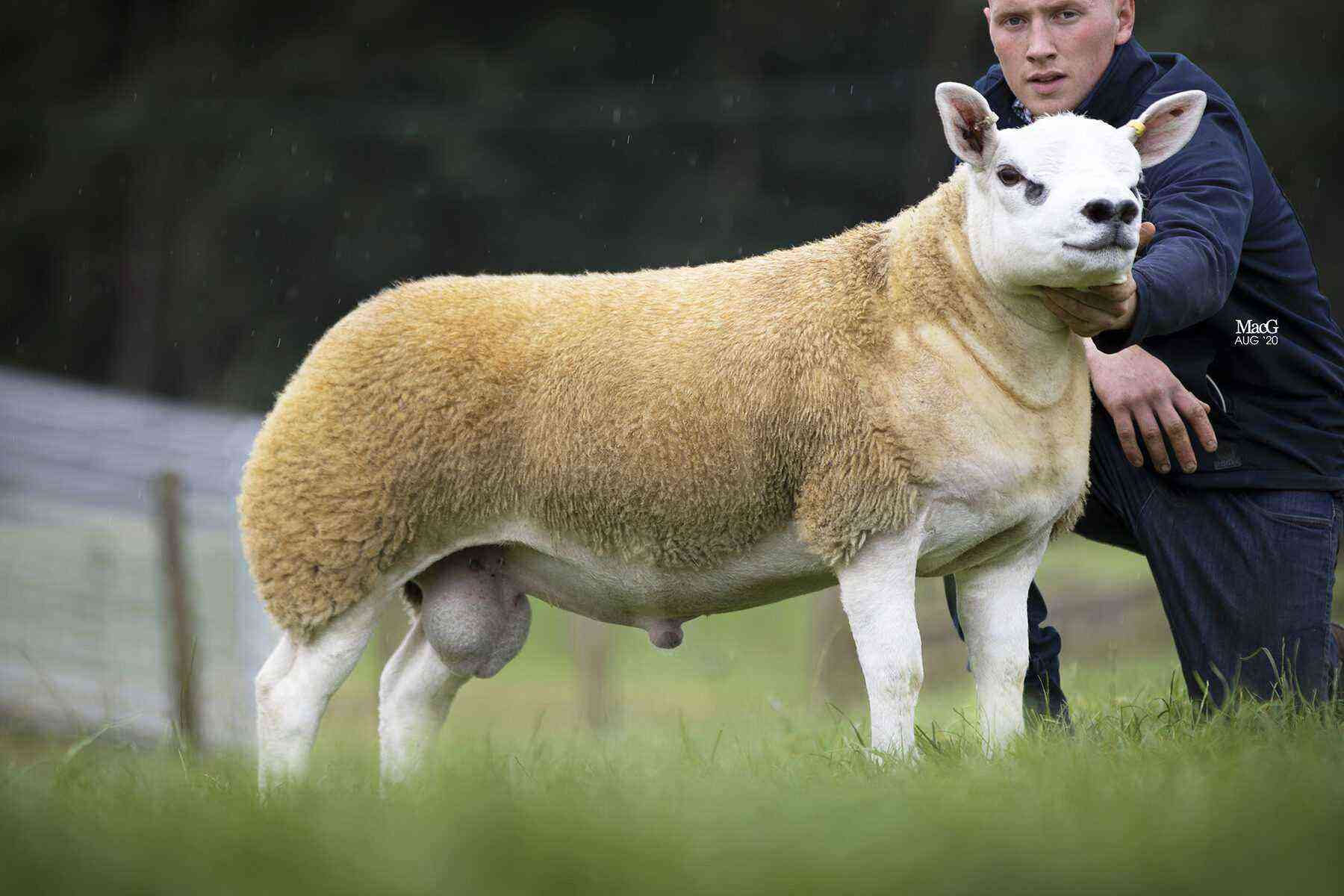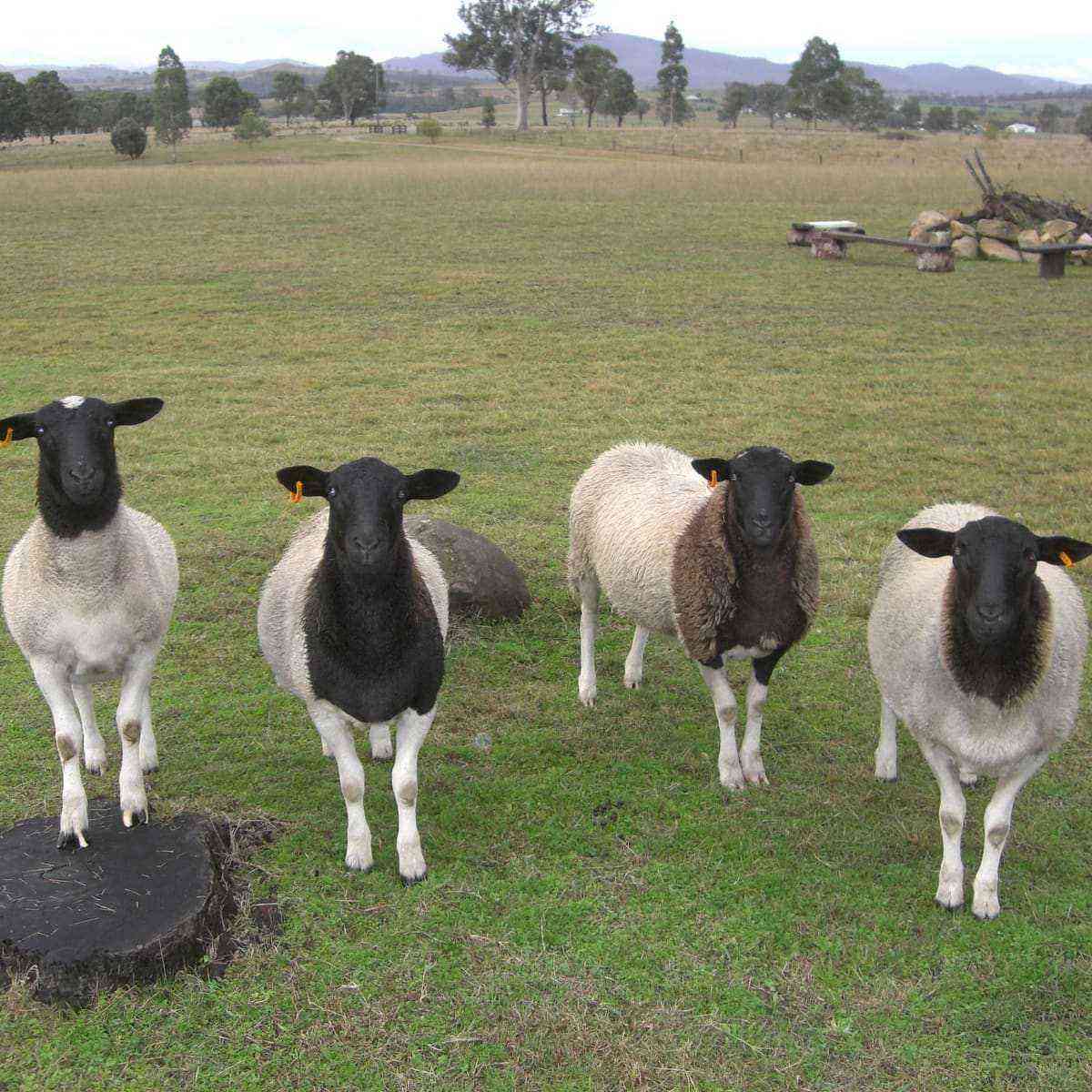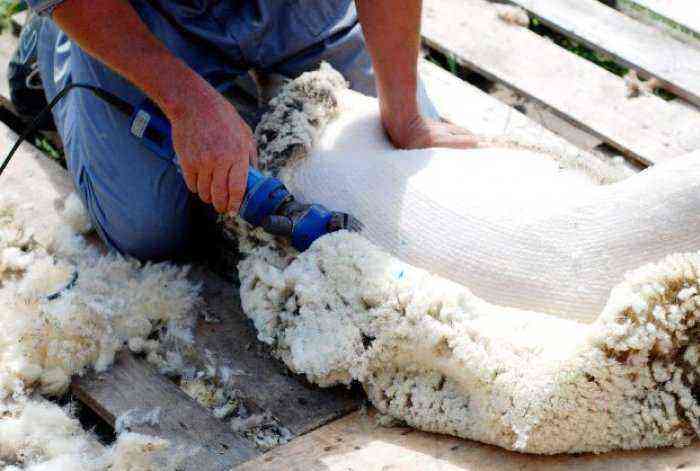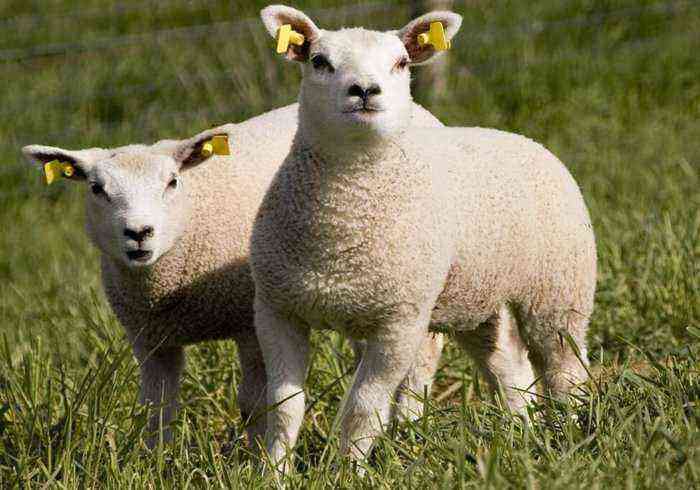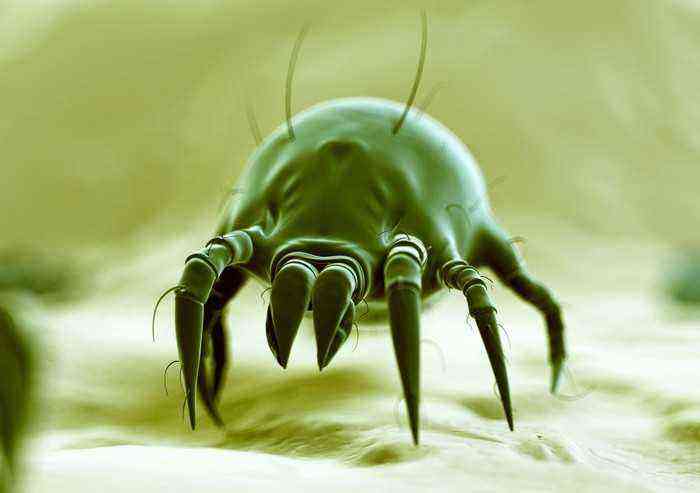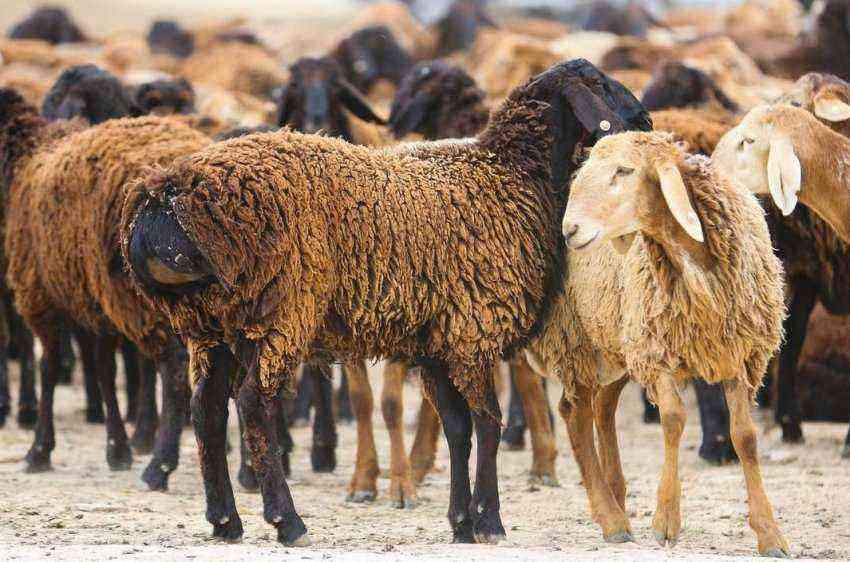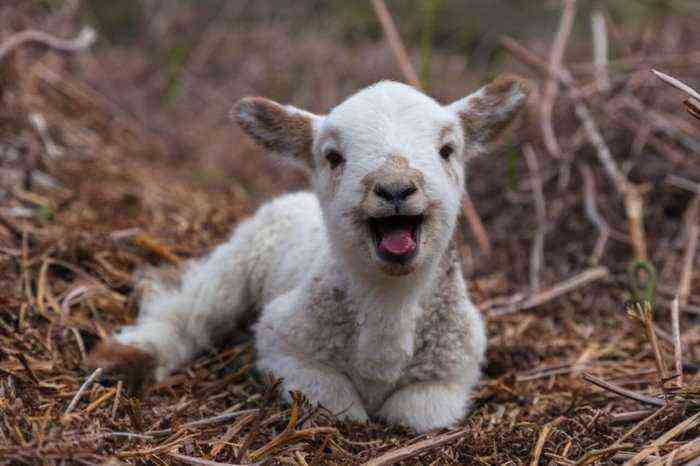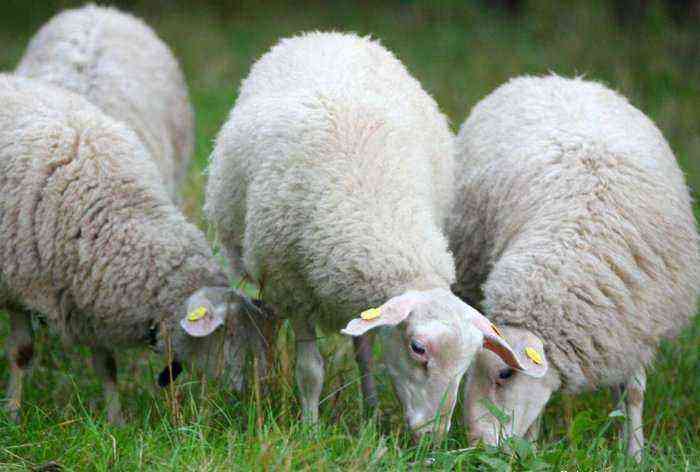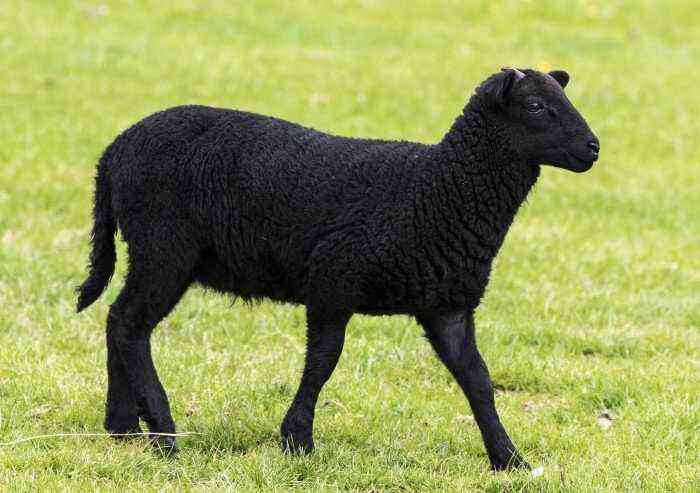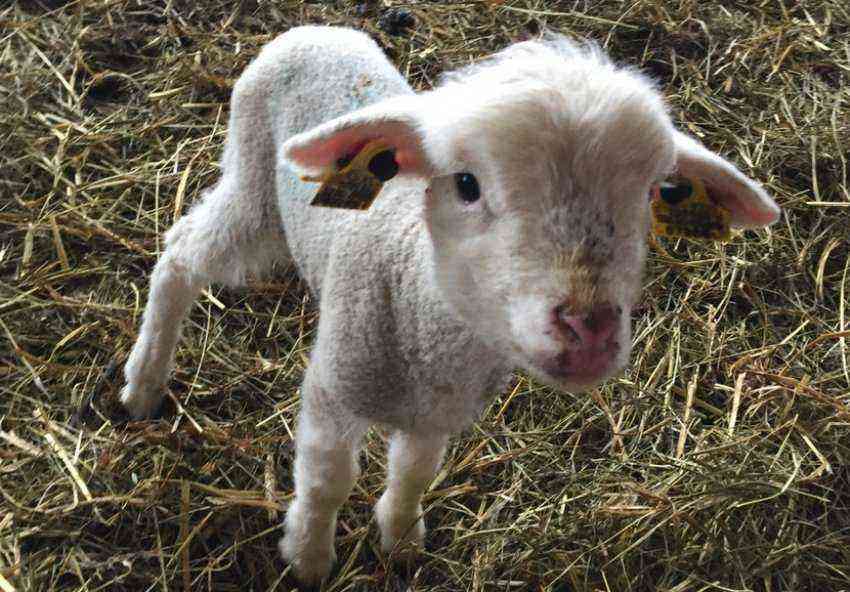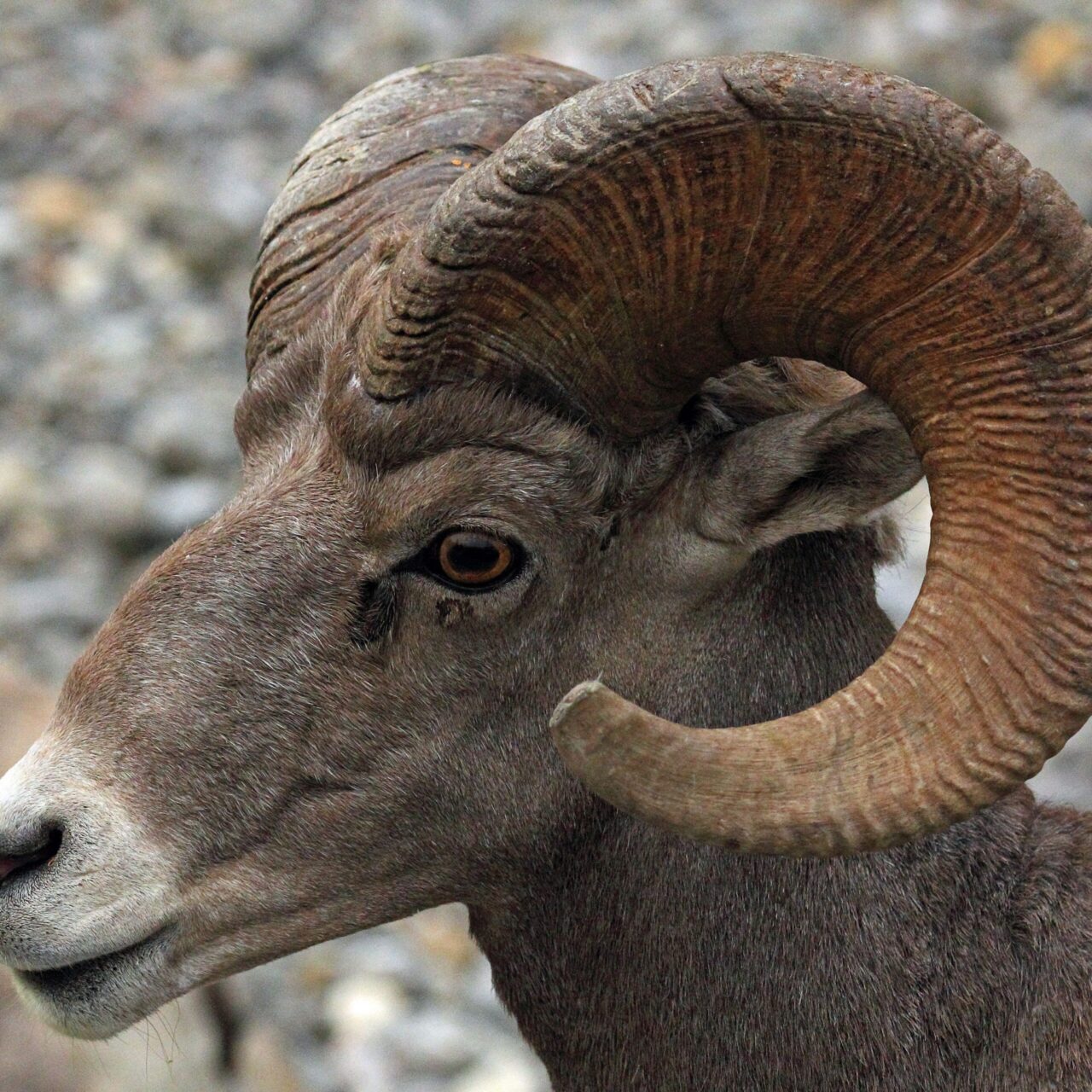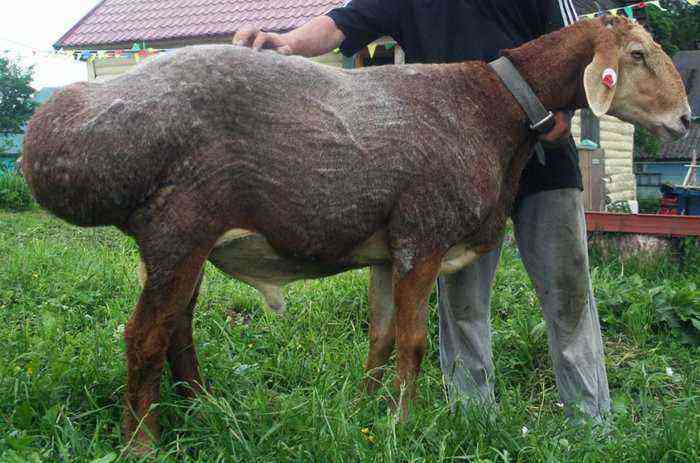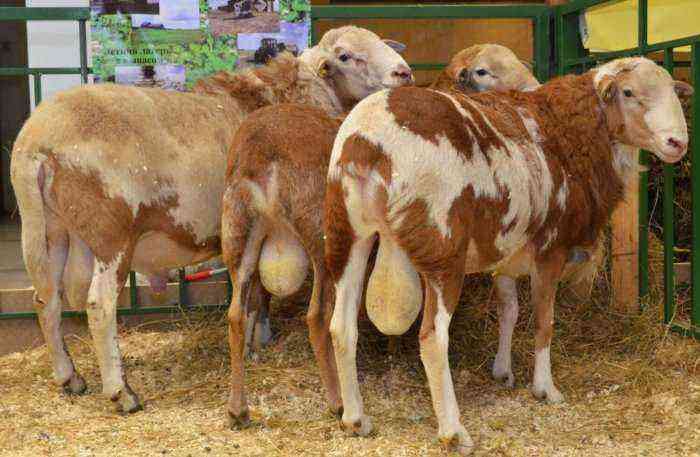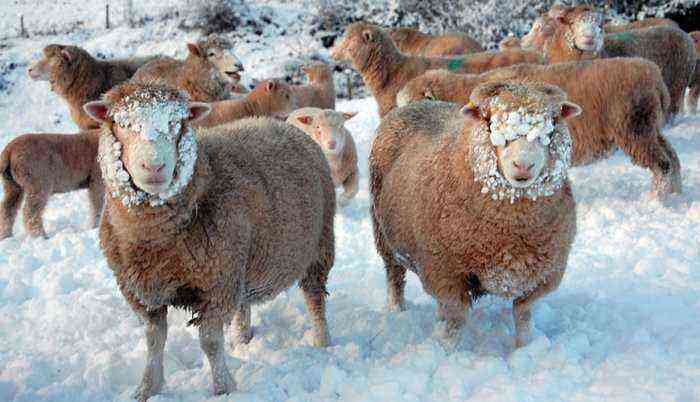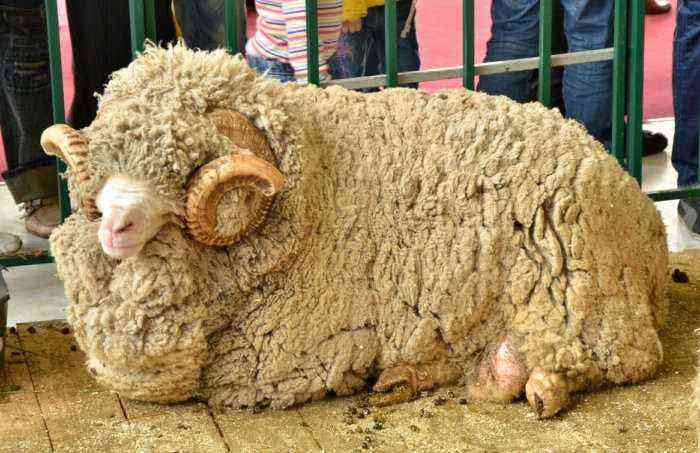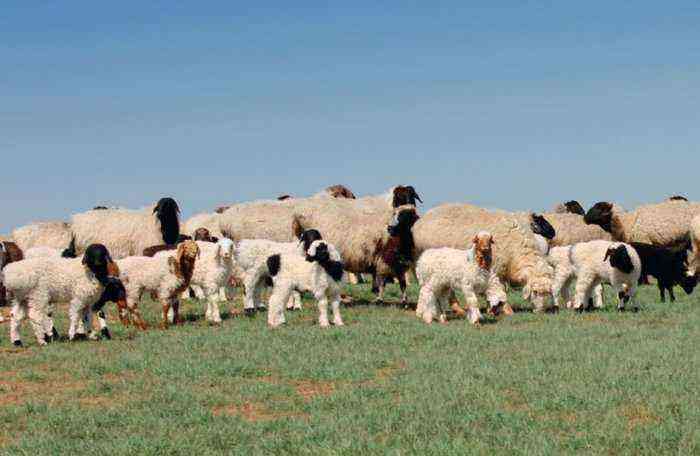Sheep are a source of high-quality wool and delicious meat, so they are grown in many farms, and Tsigai is considered one of the best breeds. These animals are characterized by high rates of meat and wool productivity, as well as an attractive appearance and comparative unpretentiousness to the conditions of detention. A detailed description of Tsigai sheep and performance characteristics, the pros and cons of the breed, animal reproduction and care features are listed later in the article.
Tsigay sheep
Since ancient times, animals of this breed have high endurance and are characterized by unpretentiousness in feeding, therefore they can travel considerable distances without compromising meat productivity. The appearance of Tsigai sheep has characteristic features by which they can be easily distinguished from representatives of other species of these animals.
Did you know? Unlike most other animals, sheep have rectangular pupils.
Many breeders use adults of this breed to develop new species that are adapted to breeding in different climates and have the same high levels of meat and wool productivity.
History of the breed
The Tsigai breed of sheep is the result of folk selection and was bred many centuries ago in Greece and Asia Minor. Over the centuries, local residents have improved the characteristics of animals of this species, achieving ever greater productivity of the breed, as well as maintaining high endurance of the sheep.
Already from the end of the 1914th century, Tsigai sheep began to be massively bred in Europe in order to obtain high-quality meat, wool and milk. In XNUMX, emigrants from the Balkan Peninsula brought these animals to Russia, and local residents crossed Tsigai sheep with Merino females to produce offspring with improved wool quality. Today, the Tsigai breed is one of the most popular and is actively bred in large and small farms.
Sheep appearance
According to the type of productivity, the Tsigai breed of sheep is divided into two areas – meat-wool and wool-meat. But representatives of both subgroups have similar features of appearance, indicating that animals belong to this breed.
Important! The wool of Tsigai sheep is characterized by high strength and is not prone to matting, therefore it is used for the manufacture of various fur products.
The main characteristics of the appearance of the Tsigai sheep are listed below:
- Animals have a strong massive body, characterized by a dry constitution. The body of animals is barrel-shaped, medium in size with a wide and deep chest.
- The back, withers and sacrum of the Tsigai sheep are quite wide, and the skeleton of the animal is very strong and strong. The long and thin tail consists of 18–23 vertebrae.
- Animals have strong, properly set legs and strong hooves that can successfully withstand the weight of a large body.
- The Tsigai sheep has a thick neck and a medium-sized head, which has a neat oval shape. Males have large swirling horns on the top of their heads, while females are polled.
- Newborn lambs have characteristic folds on dense skin, which smooth out as they grow older. Adults have elastic and smooth skin.
- The weight of an adult Tsigai ram is 75–85 kg, and females gain a mass of about 45–50 kg. Young individuals at the age of 4,5 months reach a weight of 30 kg.
- The wool of animals is painted white, has a uniform density and density.
Advantages and disadvantages of Tsigai sheep
Before you start breeding Tsigai sheep on your own, you need to analyze the advantages and disadvantages of this breed.
- The main advantages of animals of this species are:
- high meat and milk productivity;
- excellent quality wool;
- endurance of animals;
- unpretentiousness to climate conditions and feeding;
- early puberty of young individuals;
- good growth rates of young animals;
- fast weight gain;
- high fertility of females.
- In addition to numerous positive qualities, animals are not without disadvantages:
- representatives of this breed need pastures located on hills and hills;
- susceptibility to animal diseases when kept in a damp climate;
- difficult tolerance of frosts, snowfalls and prolonged rains;
- increased bone fragility with a lack of minerals in the daily diet.
wool performance
Tsigai sheep produce wool of excellent quality, which is excellent for making warm and durable fur products, and can also be easily dyed in any color. From the fleece of these animals, soft and uniform threads are obtained, which serve as excellent raw materials for the manufacture of high-quality and durable fabrics.
Important! Tsigai sheep are sheared in late April or early May in dry and warm weather.
The main wool performance characteristics of this breed are listed below:
- from an adult male, you can get 6-7 kg of high-quality fleece, and from a female – up to 5 kg;
- the length of the finished wool fiber is 10–15 cm;
- wool is very soft and thin, and it contains 80% fluff;
- the fleece of the Tsigai sheep has a quality level of 44–56;
- the yield of washed wool is about 55–60%.
Meat
Many farmers breed Tsigai sheep for high quality meat. Young individuals of this breed quickly gain weight, so soon after birth they can be sent for slaughter.
The main characteristics of the meat productivity of the Tsigai breed of sheep are presented below:
- slaughter yield of meat is about 50-55%;
- the daily weight gain of young individuals, subject to growing conditions, can reach 450 g;
- to obtain meat, lambs are sent for slaughter from the age of 5 months;
- carcasses are characterized by excellent commercial qualities and good taste;
- animal meat consists mainly of muscle tissue, and the amount of fat in it is small.
Reproduction
Sheep of the Tsigai breed are characterized by seasonality of reproduction. The mating of rams and females is usually carried out in late August or early September, focusing on signs of the onset of estrus. After the birth of offspring, the ewe begins the lactation period.
The main characteristics of fecundity and milk production of Tsigai sheep are listed below:
- females are characterized by precocity and reach sexual maturity by the age of 4 months;
- animals bear offspring for 143-150 days;
- lambing occurs once a year, in winter;
- at one time, the female gives birth to 1-2 cubs;
- the lactation period in representatives of the Tsigai breed lasts for 4 months;
- for the entire time of feeding the offspring, the female gives 100–120 liters of milk;
- milk is characterized by a high protein content and a fat content of 7-8%, therefore it is used for the production of elite varieties of cheese and feta cheese.
The main features of the reproduction of representatives of this breed are listed below:
- the female is recommended to happen with a ram only after she has gained weight over 40 kg;
- the duration of the sexual cycle of ewes is about 17 days, and the hunt continues for 38 hours;
- the main signs of the onset of estrus are animal anxiety, loss of appetite, redness of the genitals and estrus;
- if, as a result of mating, fertilization did not take place, then after 16–17 days the female begins hunting again;
- for successful fertilization, it is recommended to have Tsigai sheep twice – in the first few hours from the start of estrus, and then again a day later;
- the onset of pregnancy is indicated by the absence of sexual desire and the calm behavior of the female 3 weeks after mating, but only a veterinarian can accurately confirm the diagnosis;
- after confirmation of pregnancy, the ewe must be provided with peace of mind and a quality diet;
- before the start of lambing, the female becomes restless and looks for a secluded place – for childbirth, the animal must be placed in a separate clean pen;
- the process of lambing in the absence of complications lasts about 1 hour and does not require human intervention;
- newborn lambs begin to look for food already 20 minutes after birth, therefore, at the end of lambing, it is recommended to wash the female’s udder with soda solution and remove contaminated wool;
- after cleaning in the paddock, the female is left alone with the offspring.
Did you know? To determine the pregnancy of a sheep at an early stage, you can let a ram into the pen with females – it will quickly distinguish pregnant individuals and will only show interest in unfertilized females.
Care and longevity
Tsigai sheep are not very picky about the growing conditions and the composition of the diet, but with a shortage or low quality of feed, the condition of the animal’s coat deteriorates noticeably. And in the cold season, representatives of this breed need more care, as they do not tolerate cold and precipitation.
The main features of keeping and feeding Tsigai sheep are listed below:
- in the warm season, sheep are driven out to pasture from 5 am until dark, briefly returning them to the watering stall in the middle of the day;
- so that the flock does not get wet during short-term summer rains, it is recommended to build a covered canopy for it – under it the animals will be able to hide from bad weather, being in the fresh air;
- in summer, an adult ram needs about 10 kg of fresh grass daily, and females – up to 8 kg;
- animals need to be regularly watered – for each adult, at least 8 liters of water at room temperature are needed;
- during cold snaps and prolonged rains, as well as in winter, representatives of this breed should be kept in barns with wooden walls and clay floors covered with a thick layer of dry straw;
- the room for keeping the flock should be warm and dry (at least +5 … + 10 ° C in winter and + 20 ° C in summer), with a good ventilation system and no drafts;
- inside the structure, feeders and drinkers should be installed, as well as individual pens for pregnant sheep and newborn lambs;
- compartments for feed and water must be kept clean, as animals will not drink muddy water or eat stale food;
- each representative of the flock should have 3 m² of free space;
- in winter, an adult should receive at least 2 kg of hay and vegetables per day, as well as mixed feed, mineral supplements, chalk and iodized salt;
- young lambs are gradually accustomed to vegetables and fine hay already 2 weeks after birth, and at the age of 4 months, the cubs are completely weaned from the female;
- in winter, the flock is recommended to be released daily into fresh air, provided there is no precipitation and severe frosts;
- after wintering, the animals are transferred to the summer diet gradually – on the first day, the sheep are driven out to pasture for 2-3 hours, and then every day they increase the time they spend in the fresh air.
Important! The average life expectancy of sheep is 12–14 years.
With improper care or violation of the conditions of detention, Tsigai sheep can get sick. The list of diseases that most often occur in animals of this breed is presented below:
- Helminthiasis. Worms affect the lungs and liver of the animal, and infection occurs when the conditions for keeping sheep are violated or the flock is grazing on a wet pasture with poor-quality grass. Signs of this disease are diarrhea and lethargy, loss of appetite, exhaustion of the animal and hair loss. Treatment of helminthiasis is prescribed by a veterinarian, and special anthelmintic agents are used to combat the disease.
- Brittle bones. The disease occurs as a result of improper diet of sheep. As a result, the limbs of animals become weak and cannot support the weight of a large body, and bone fractures occur. To cure the disease, it is enough to adjust the diet by adding minerals to it.
- Hoof decay. Occurs when grazing a flock in a swampy area or in a forest, as well as in violation of sanitary conditions in a room for keeping sheep. Signs of foot rot include lameness of the animal and its inability to stand up on its own. If this disease is detected, hoof trimming is performed, and additional medications may also be prescribed to relieve inflammation.
- Pneumonia. The disease spreads among livestock when keeping animals in a damp room with a draft, as well as early shearing of sheep. The main symptoms of the disease are lethargy and loss of appetite, fever up to +41°C, heavy breathing and purulent discharge from the nose. Treatment is with antibiotics (eg. Streptocide, Neomycin) and prescribed by a veterinarian.
To prevent the occurrence of these diseases, you need to follow these recommendations:
- annually carry out autumn disinfection of the premises for keeping animals with a solution of whiteness;
- monitor the cleanliness and dryness of the bedding in the shed;
- use sunny and dry areas with high-quality grass for walking sheep;
- regularly clean the drinkers and feeders, filling them with fresh water and food;
- eliminate cold drafts and dampness in the room for keeping flocks;
- periodically inspect the herd in order to detect diseased individuals and place them in quarantine.
Did you know? Sheep have an excellent memory, and newborn lambs are able to recognize their mother by remembering her voice.
Habitat areas
Representatives of this breed adapt well to various climate conditions, so they are bred in many countries. In the northern regions with frosty and snowy winters, animals can be kept in warm sheepfolds, where they fully retain their high productivity rates.
Sheep of this breed are successfully raised in the following countries:
- Slovakia;
- Romania;
- Moldavia;
- Hungary;
- Ukraine;
- Russia;
- Yugoslavia;
- Poland;
- Kazakhstan;
- Australia.
Due to its numerous positive qualities, the Tsigai breed of sheep is common among livestock breeders in many countries and is actively bred to obtain tasty meat and high-quality wool. By following the recommendations listed in this article, you can breed these animals yourself, and caring for them will not require a lot of time and effort from the farmer.
